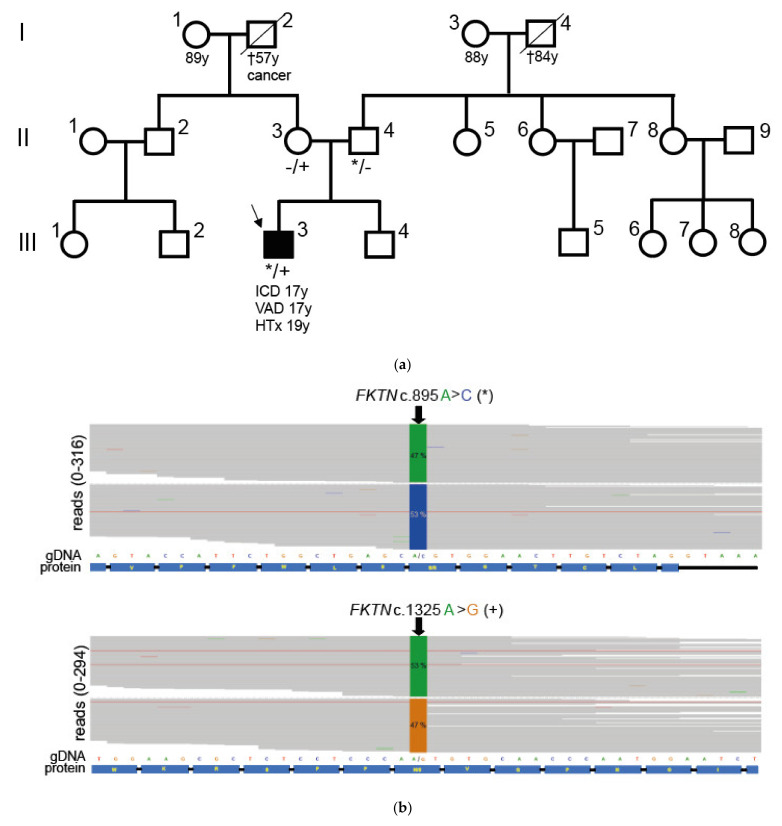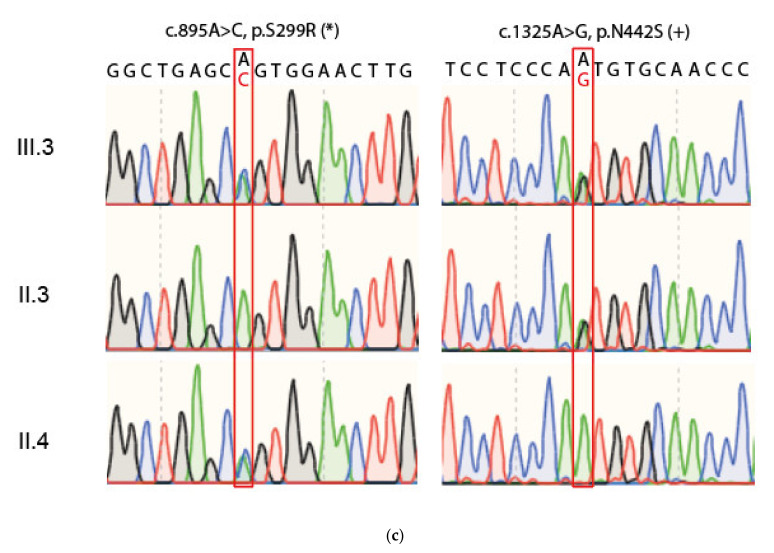Figure 1.
Pedigree and genotyping analysis. (a) Shown is the pedigree of the patient with the compound heterozygous FKTN variants. Circles represent females, and squares represent males. Affected individuals are shown as black-filled symbols. The index patient is marked with an arrow. † = deceased. The age of the patient at the time of ventricular assist device implantation (VAD), implantable cardioverter defibrillator implantation (ICD), or heart transplantation (HTx) is indicated (y = years). (b) Integrated genome view of parts of FKTN showing the variants identified in the index patient (III.3). The percentage of reads corresponding to the base identified at the relevant positions (c.895 and c.1325) is given (green = A, blue = C, orange = G). Below the reads, the genomic DNA sequence (gDNA) and the sequence of the translated protein (protein) are shown. (c) Electropherograms obtained by Sanger sequencing of the FKTN-regions with the particular variants. The index (III.3) patient carries both FKTN c.895A>C (p.S299R, *) and the c.1325A>G (p.N442S, +) variants (*/+ in A). The patient’s parents (II.3 and II.4) were heterozygous for one of the mutations (−/+ or */− in A).


